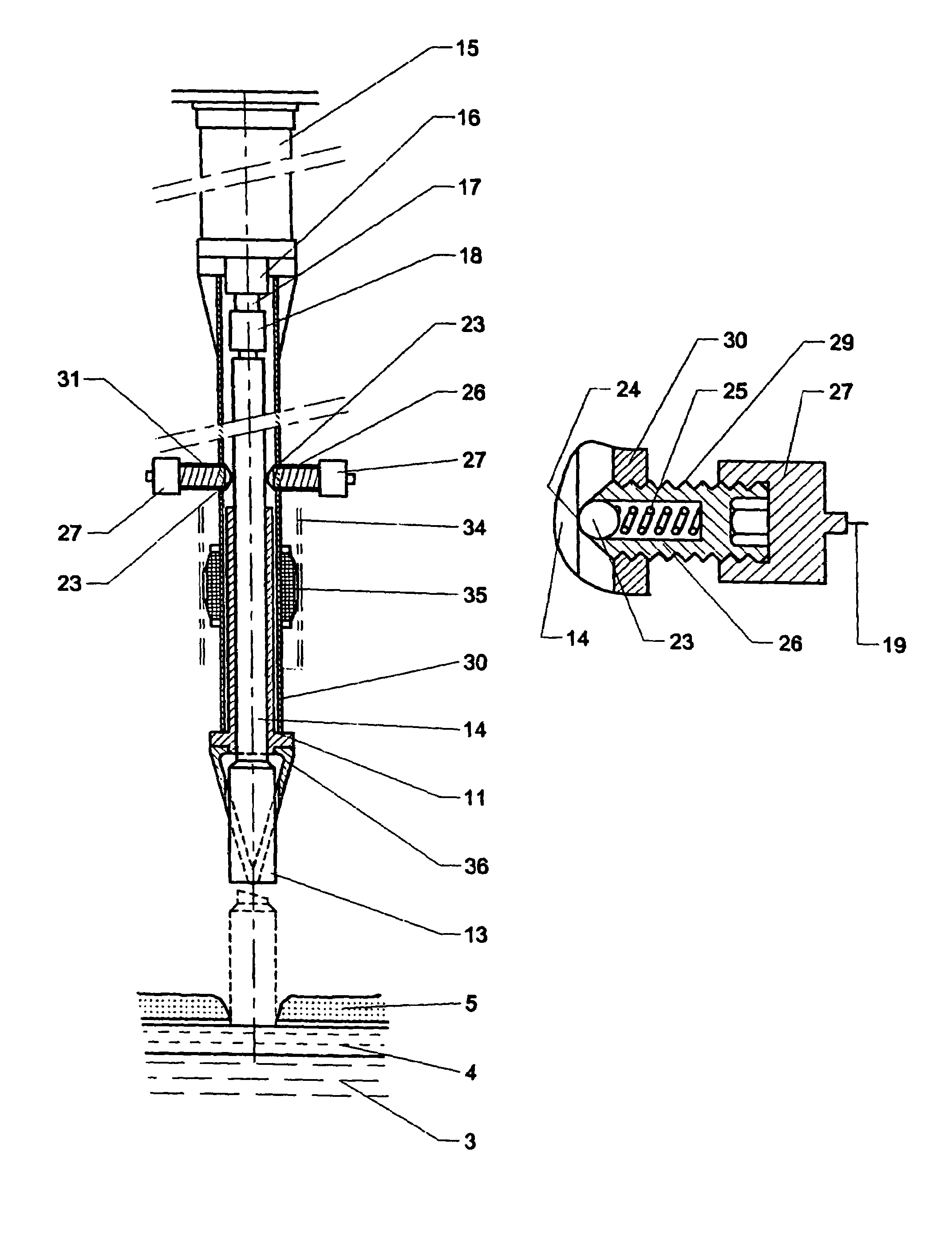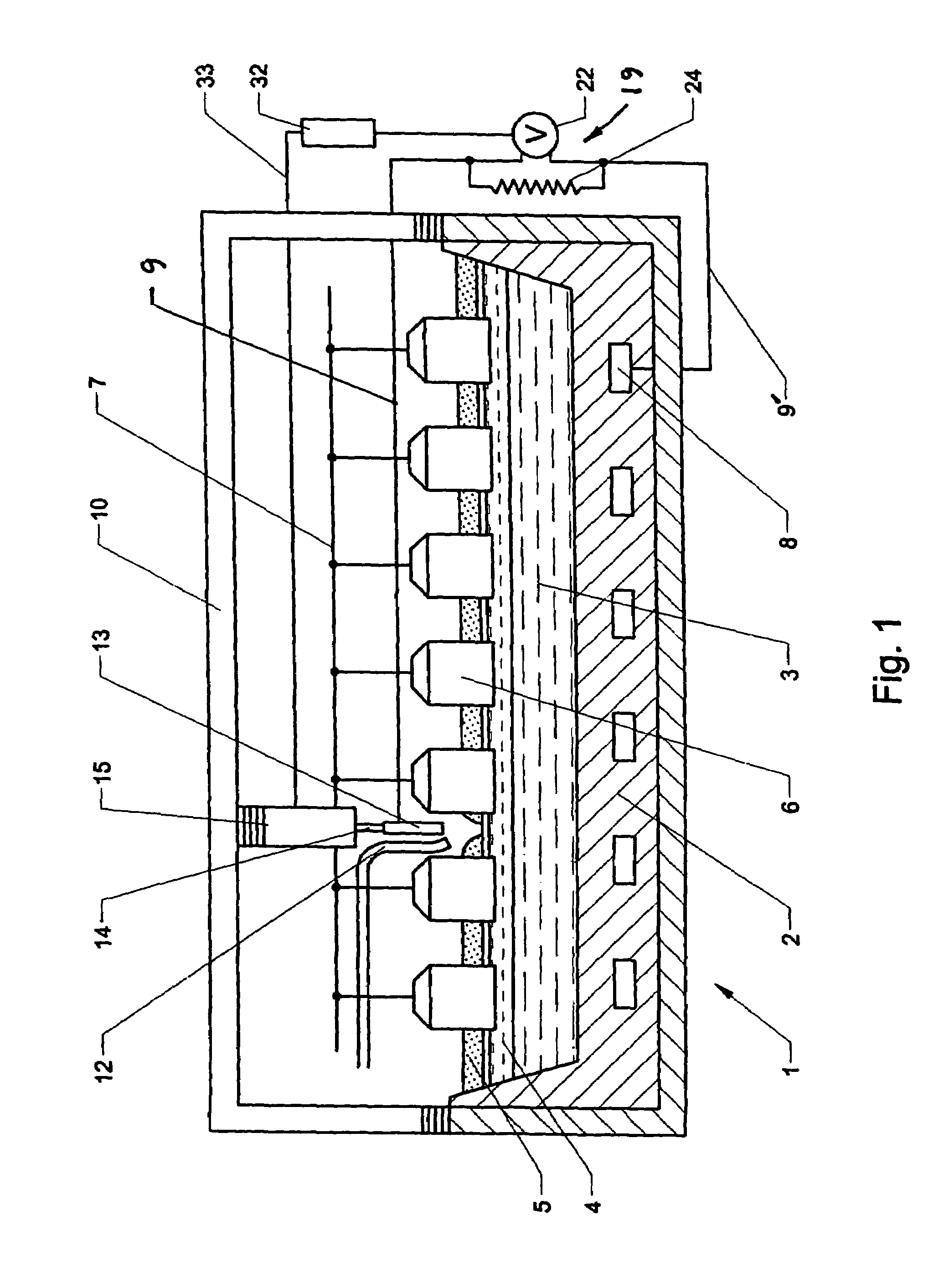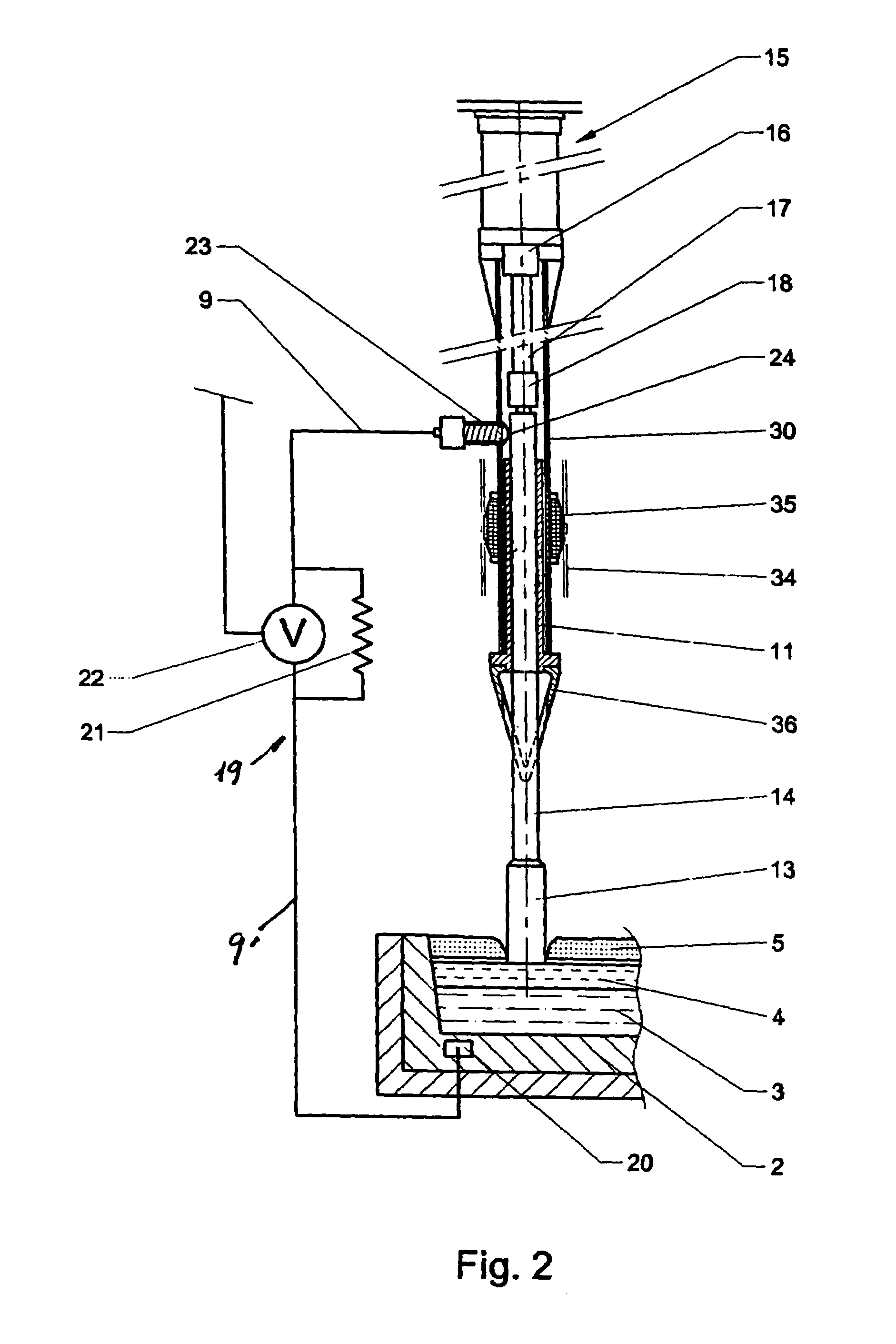Device for controlling the travel distance of a chisel in a feeding system for an aluminium production electrolytic cell
a technology of electrolysis cell and chisel, which is applied in the direction of electric circuits, manufacturing tools, instruments, etc., can solve the problems of chisel deviation, chisel deformation, and active end of crust breaker, also called chisel, and achieves easy replacement, prevent deviation of rod, and facilitate assembly
- Summary
- Abstract
- Description
- Claims
- Application Information
AI Technical Summary
Benefits of technology
Problems solved by technology
Method used
Image
Examples
Embodiment Construction
[0032]FIG. 1 shows an electrolytic cell 1 intended for aluminum production using the Hall-Héroult process. This cell 1 comprises a cathode 2 formed of several cathode blocks, a molten aluminum bath 3, a molten electrolytic bath 4 above which there is a crust 5 formed from a solid electrolyte and alumina, anodes 6 dipping into the electrolyte, a positive bar 7 that distributes electrical current to the anodes, cathode bars 8 sealed in the cathode blocks 2 and that carry electrical current output from the cathode 2, a least one negative bar that collects current from the cathode bars 8 and a superstructure 10 on which the control device according to the invention is typically fixed, shown diagrammatically in this Figure adjacent to an alumina and / or electrolyte feeding system 12.
[0033]As shown in FIG. 2, the installation comprises a chisel 13 supported by a rod 14. The chisel 13 may be fixed to the rod 14, for example by screwing, or it may form a single part with the rod 14. This chi...
PUM
| Property | Measurement | Unit |
|---|---|---|
| Force | aaaaa | aaaaa |
| Angle | aaaaa | aaaaa |
| Shape | aaaaa | aaaaa |
Abstract
Description
Claims
Application Information
 Login to View More
Login to View More - R&D
- Intellectual Property
- Life Sciences
- Materials
- Tech Scout
- Unparalleled Data Quality
- Higher Quality Content
- 60% Fewer Hallucinations
Browse by: Latest US Patents, China's latest patents, Technical Efficacy Thesaurus, Application Domain, Technology Topic, Popular Technical Reports.
© 2025 PatSnap. All rights reserved.Legal|Privacy policy|Modern Slavery Act Transparency Statement|Sitemap|About US| Contact US: help@patsnap.com



